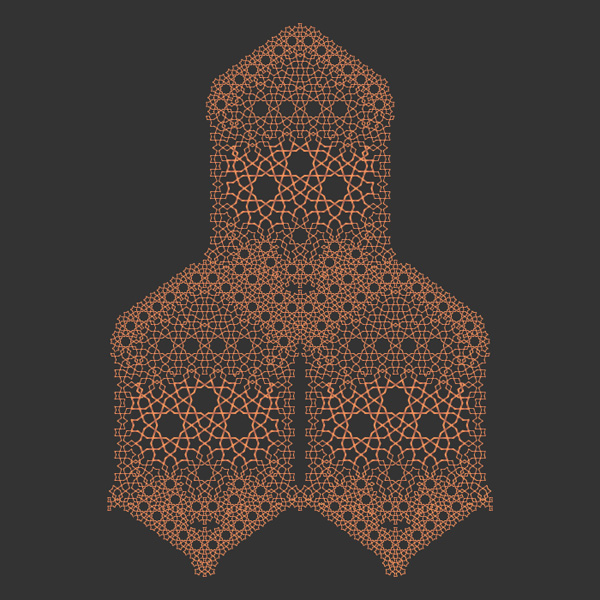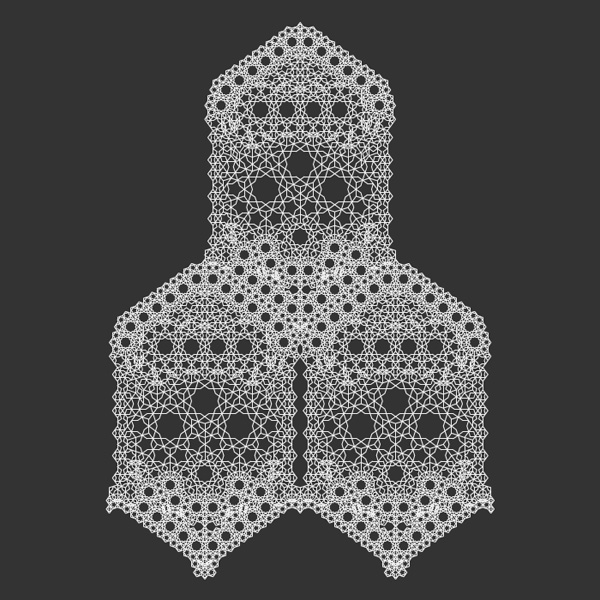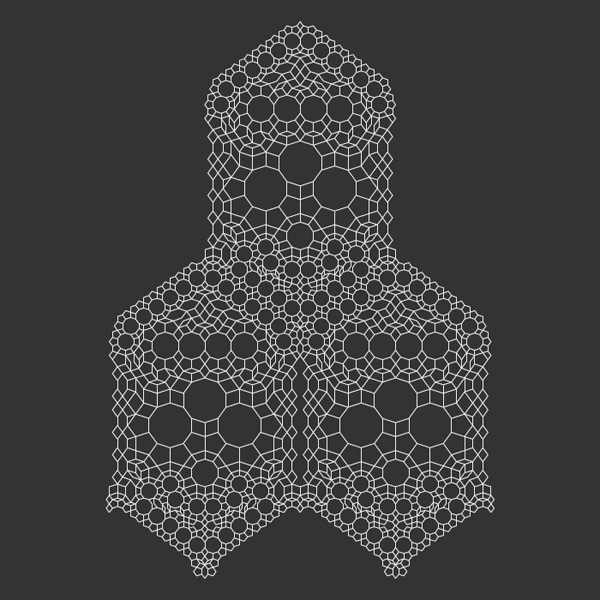| Joe Bartholomew |
| Girih Extended | 8 of 16 |
||||
 |
||
| In their article about girih tiles, published in the journal Science in 2007, Peter J. Lu and Paul J. Steinhardt note: “The conventional view holds that girih (geometric star-and-polygon) patterns in medieval Islamic architecture were conceived by their designers as a network of zigzagging lines, where the lines were drafted directly with a straightedge and a compass. We show that by 1200 C.E. a conceptual breakthrough occurred in which girih patterns were reconceived as tessellations of a special set of equilateral polygons (girih tiles) decorated with lines.” more... |
||
|
|
||
 |
||
| An intermediate pattern shows both the polygons and girih lines. |
||
|
|
||
 |
||
| The underlying structure of polygons. |
||
“Merlon” |